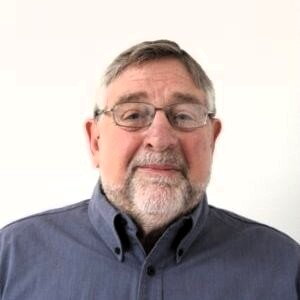When alum Dr. Allen Hartford (PhD, ’71, Lombardi) was an undergraduate student in northern California majoring in chemistry and minoring in mathematics, there were no opportunities to do summer research in chemistry.
“Instead of doing research, I spent two summers working at a pickle factory. And one summer working in a cardboard box factory, which didn't exactly enhance my education, although I guess, in some ways, it made me realize I didn't want to do that for the rest of my life,” said Dr. Hartford who went on to have a long and accomplished career at Los Alamos National Laboratory (LANL) in New Mexico.
Now retired, Dr. Hartford has established the Dr. Allen Hartford Scholarship for Undergraduate Research in Chemistry at Illinois to financially help undergraduate students and provide them with opportunities to do the research that can enhance their education.
“To help students get through and stay in science is very important to me. The undergraduate time is pivotal in making career decisions and if there are professors who are willing to invest the time in undergraduates, I'm certainly interested in helping them do that."
— Dr. Allen Hartford
Dr. Hartford’s nearly 30-year career at Los Alamos started as a bench scientist, but he quickly transitioned to management and later upper management. From 1985 to 1993 Dr. Hartford led the Chemical and Laser Sciences Division, a 300-person organization engaged in research, development in many areas including environment, defense, energy, nuclear materials, space technologies, inertial confinement fusion, biosciences, and economic competitiveness.
Later, as Director of Science and Technology Base Programs, he managed a broad variety of LANL functions, including DOE Office of Science programs, University of California research collaborations, two competency centers – the Center for Nonlinear Studies and the Institute for Geophysics and Planetary Physics – and two externally funded centers – the Center for Human Genome Studies and the National High Magnetic Field Laboratory.
As director, he also managed the undergraduate, graduate student, and postdoctoral programs, which has also motivated his desire to establish a scholarship and provide more opportunity for undergraduate students to get involved in the hands-on research that helps them apply what they learn in the classroom and engage with chemistry.
“Los Alamos has always had a lot of graduate students working there, because we have several major national user facilities. But during the summer, we also have quite a few undergraduates, and managing that program made me realize the importance of getting younger people engaged in and interested in science,” he said.
The Dr. Allen Hartford Scholarship for Undergraduate Research was awarded last summer to the first undergraduate recipient.
Dr. Hartford said the student plans to pursue a career in science.
“So, it was really gratifying that this maybe helped them along to reach a goal,” he said.
Growing up in Castro Valley, a small town near San Francisco, Dr. Hartford said he always had a fascination with science from a pretty young age and had high school teachers who really helped cement his path toward science and chemistry. He graduated from the University of California-Berkeley and headed for graduate school at Illinois thinking he would study inorganic chemistry. But he was more interested in the effort to build a spectrometer in Prof. John Lombardi’s group.
“It was the highest resolution spectrometer in the world at the time. Along with the computing power that was available at Illinois, we were able to do some unique things,” said Dr. Hartford, whose PhD research focused on high resolution spectroscopy of polyatomic molecules.
Following postdoctoral research at Cal-Berkeley where he applied lasers to study the excitation and energy transfer in molecules, Dr. Hartford went to work at Lawrence Livermore National Lab for two years in the laser isotope separation program, then worked three years at Allied Corporation, launching a program using lasers in chemical processing. But he decided he liked the environment in a national laboratory and soon left for LANL, where he spent the rest of his career.
Dr. Hartford said he had the good fortune to meet some of the people involved in the Manhattan Project.
“When I worked at Livermore, I'd been there just a couple of months, and I got a call from the secretary of Edward Teller, who said Dr. Teller would like to speak with you. I thought maybe I'd done something wrong,” Dr. Hartford said with a laugh. “But Dr. Teller was always interested in new employees and what they were up to and what their research was about.”
Dr. Hartford said it was interesting to talk with the man who had made such important scientific contributions to spectroscopy that two phenomena in the field bear his name, the Jahn-Teller effect and the Renner-Teller effect.
Looking back over his career, Dr. Hartford said his doctoral education at Illinois laid the foundation for the successful scientific career he enjoyed.
“At Illinois, I really loved the campus. I loved the people I worked with, and I really got a good education. For me, it was pivotal in helping me develop my career. I learned so much and I was very productive and had a lot of publications. It helped me a lot in establishing my career,” he said.
